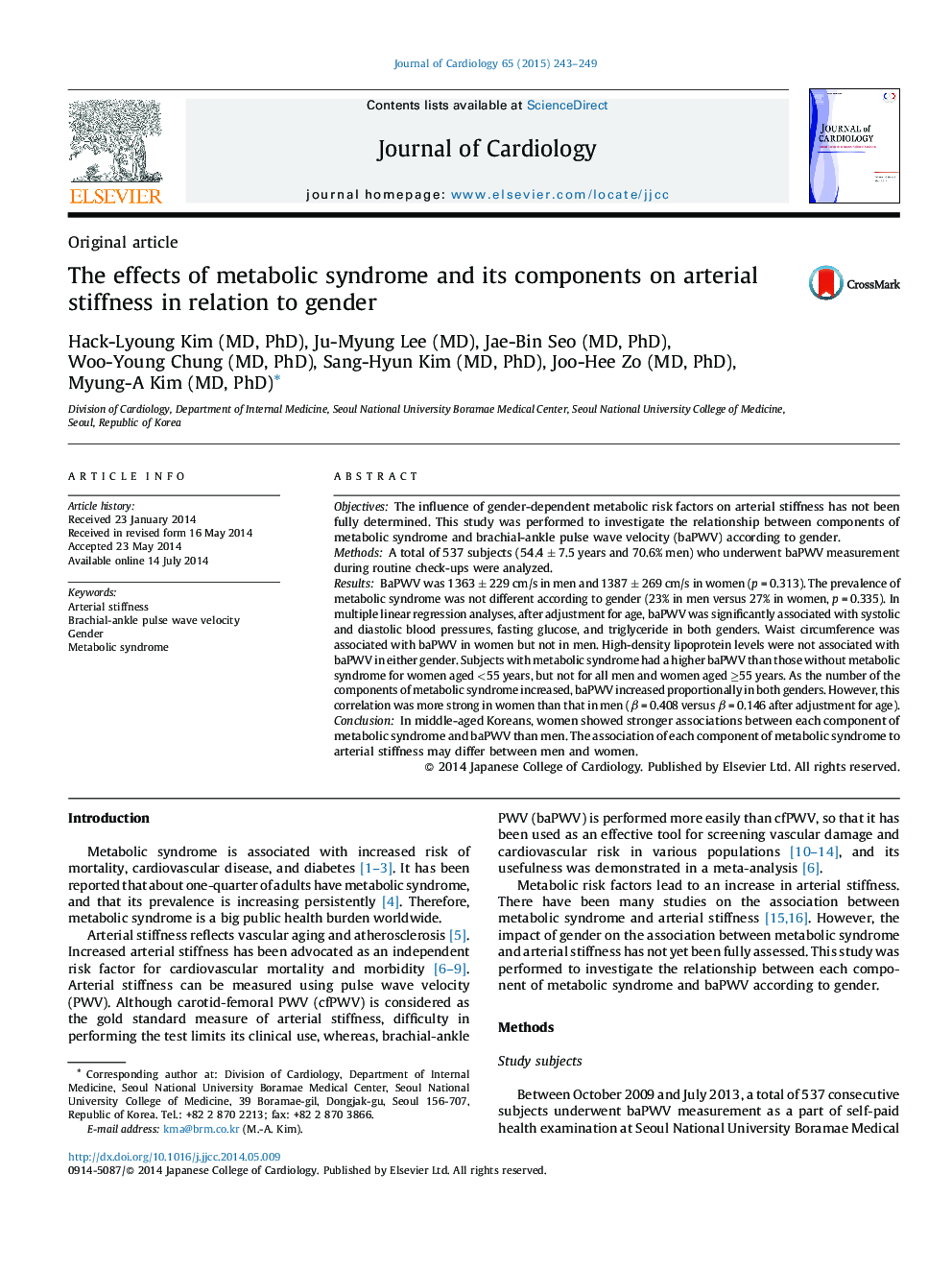| Article ID | Journal | Published Year | Pages | File Type |
|---|---|---|---|---|
| 5983966 | Journal of Cardiology | 2015 | 7 Pages |
ObjectivesThe influence of gender-dependent metabolic risk factors on arterial stiffness has not been fully determined. This study was performed to investigate the relationship between components of metabolic syndrome and brachial-ankle pulse wave velocity (baPWV) according to gender.MethodsA total of 537 subjects (54.4 ± 7.5 years and 70.6% men) who underwent baPWV measurement during routine check-ups were analyzed.ResultsBaPWV was 1363 ± 229 cm/s in men and 1387 ± 269 cm/s in women (p = 0.313). The prevalence of metabolic syndrome was not different according to gender (23% in men versus 27% in women, p = 0.335). In multiple linear regression analyses, after adjustment for age, baPWV was significantly associated with systolic and diastolic blood pressures, fasting glucose, and triglyceride in both genders. Waist circumference was associated with baPWV in women but not in men. High-density lipoprotein levels were not associated with baPWV in either gender. Subjects with metabolic syndrome had a higher baPWV than those without metabolic syndrome for women aged <55 years, but not for all men and women aged â¥55 years. As the number of the components of metabolic syndrome increased, baPWV increased proportionally in both genders. However, this correlation was more strong in women than that in men (β = 0.408 versus β = 0.146 after adjustment for age).ConclusionIn middle-aged Koreans, women showed stronger associations between each component of metabolic syndrome and baPWV than men. The association of each component of metabolic syndrome to arterial stiffness may differ between men and women.
